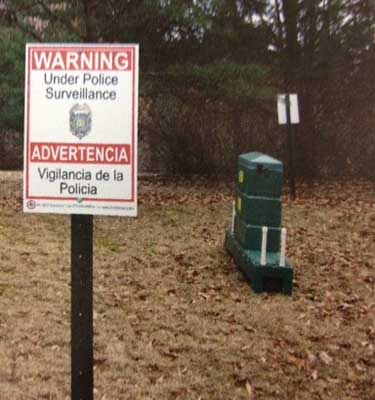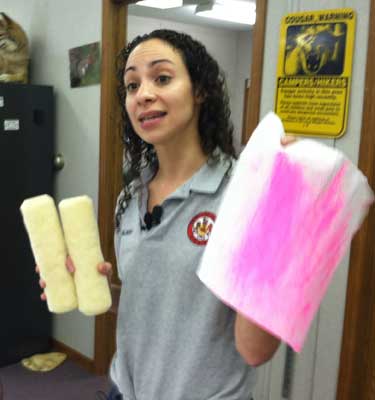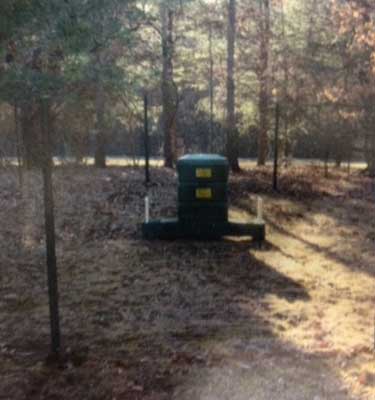







Andrew Mollenbeck, wtop.com
FAIRFAX, Va. – Hey, deer, you look great in pink.
A research study to control ticks in Fairfax County is creating a bizarre sight: deer with pink stripes.
But it’s not the optics that scare off the ticks. It’s the pesticide that goes along with the pink dye.
The pilot study has deployed deer treatment stations at 20 locations in the county.
Giant bait feeders hold up to 250 pounds of corn. On either side of the storage compartment, two troughs are guarded by two rollers.
“The rollers are actually paint rollers — literally,” said Vicky Monroe, a wildlife biologist for Fairfax County.
“We spray each paint roller with a pesticide. It’s specially formulated to kill ticks,” she said.
The non-toxic pink dye fades after three or four days.
In order to get to the corn, deer have to touch their heads against the rollers, which apply the pesticide and pink stripes to the head and neck.
During normal grooming, the deer spread the pesticide to the rest of the body.
So why do deer get singled out for being worst-dressed in the woods?
Well, deer are the primary host of adult black-legged ticks which transmit diseases, such as Lyme disease, to humans, according to the Wildlife Biologist Office.
The three-year study is way to analyze how technology can reduce tick infestations.
“Ultimately what we’re hoping for is that there are…reductions in the tick densities in the area, and the reduction of ticks on the body of deer that travel into people’s backyards,” Monroe said.
The feeding stations have been set up at Sully Woodlands Park and Hemlock Overlook Regional Park.
Follow Andrew and WTOP on Twitter.
(Copyright 2012 by WTOP. All Rights Reserved.)







